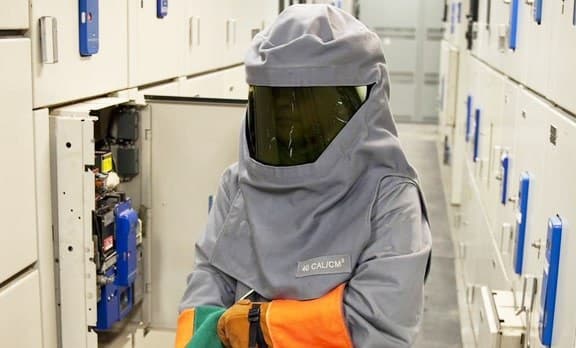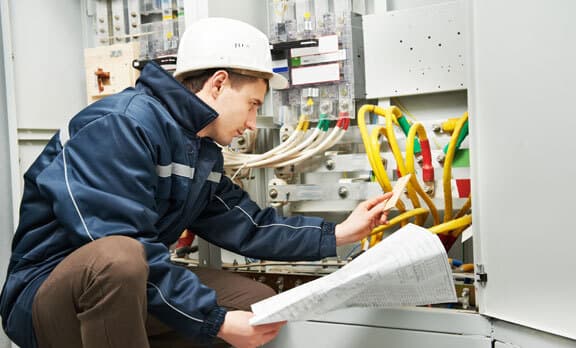
Linking Electrical Safety and Equipment Reliability
They’re closer than you think!
One of the hottest topics discussed in the maintenance and reliability world these days is electrical safety. It is hard to imagine that a topic that seems to be naturally necessary would be so polarizing, but the fact remains that it does.
Despite the demonstrative proof that arc flash Personal Protective Equipment (PPE) increases safety and significantly improves the likelihood of reducing or even preventing injury, there is a persistent argument that PPE is cumbersome to the point of increasing the risk of injury. One would think that when it comes to the topic of allowing people to go home at the end of the workday injury-free, we would all agree, but apparently not.
A particular point of contention is regulatory compliance. The National Fire Protection Agency (NFPA) 70E: Standard for Electrical Safety in the Workplace® is a document many reliability professionals have heard of but cringe when they hear it mentioned. It is this standard that drives the requirement for arc flash risk assessment, equipment labeling, and PPE application.
There are several other guidelines in this venerable standard, but most folks seem to focus on the aforementioned three, and often in a less than favorable light. Just as with many standards, there are misconceptions surrounding what is spelled out in NFPA 70E®, and even some speculation around whether compliance with it is required.
The short answer to the latter question is no. NFPA 70E® is a voluntary compliance standard. NFPA is not a government entity and cannot enforce compliance with any of its standards.
The Occupational Safety and Health Administration (OSHA), on the other hand, is a government entity and can enforce regulatory compliance. In the event of a lost time electrical accident in a facility, OSHA is going to ask what measures were taken to protect the employee from the risks he was exposed to in the performance of his duties. That is an OSHA requirement, and it comes straight out of 29 CFR 1910.132 paragraph (d)(1). It states the following:
“The employer shall assess the workplace to determine if hazards are present, or are likely to be present, which necessitate the use of personal protective equipment (PPE). If such hazards are present, or likely to be present, the employer shall:
Select, and have each affected employee use, the types of PPE that will protect the affected employee from the hazards identified in the hazard assessment;
Communicate selection decisions to each affected employee; and, Select PPE that properly fits each affected employee.”
An argument often heard in the maintenance and reliability field is that compliance with NFPA 70E® is cumbersome and reduces the efficiency and effectiveness of those performing the specific field scope of work. What is overlooked is the fact that full compliance with the guidelines of NFPA 70E® encompasses points of a maintenance strategy that can increase electrical reliability. The electrical equipment modeling, arc flash risk assessment, and equipment labeling are only a small part of NFPA 70E® compliance.
There is an entire section of this safety standard devoted to safety-related maintenance requirements. These requirements are aimed at safety first but have a secondary effect of having a positive effect on reliability efforts that drive towards increased equipment uptime. While specific condition monitoring technologies are not spelled out in NFPA 70E®, many of the maintenance requirements lend themselves to making those tasks not only safer but less arduous to perform.
Article 200 (Introduction) of NFPA 70E® is careful to note that Chapter 2 does not prescribe specific maintenance methods or testing procedures. Industry best practices for equipment maintenance can obviously be utilized to meet the requirements specified in this chapter of the standard. Let’s explore some of the guidelines and their impact on uptime.
Article 205.2 specifies that an accurate and legible single-line electrical diagram be provided for a facility electrical system. The value-add from a reliability standpoint is certainty in lockout/tagout points for actions requiring it. Article 205.8 gives guidance on locks, interlocks, and other safety equipment. While on the surface this may seem more aligned with safety, it is also an equipment operation concern.
Article 205.5 discusses requirements for working spaces and clearance around equipment. Again, while the safety angle here is obvious, less obvious is the implication of equipment spacing for the purposes of adequate airflow for cooling and reliable operation of electrical components.
When Reliability Engineers are faced with designing a failure-based maintenance strategy, it has long been accepted that they first understand the makeup of the equipment that needs to be maintained. The first step in accomplishing this is to identify the equipment hierarchy (ISO 14224) and thus understand and document the parts, assemblies, and components that make the equipment.
This task can be daunting, but if done completely and with accuracy, one will be able to assign appropriate specific maintenance tasks based on predominant or likely failure modes. As reliability engineers, our desire is to design and implement the most effective maintenance strategy while realizing the optimum life cycle cost of the equipment being maintained.

The initial step of performing an arc flash risk assessment is to model the electrical distribution system. To accurately do so, time is required in the field to identify and validate the electrical system’s equipment hierarchy.
In essence, we are capturing critical electrical attribute information to not only ensure the accuracy of the incident energy ratings but to understand and document the specific parts, assemblies, and components that form the electrical equipment and system that we must reliably maintain. The information collected during this stage provides the reliability engineer with a level of detail more than sufficient to design a thorough failure-mode-based maintenance strategy for the entire electrical distribution system.
Some of the above-mentioned articles (205.2, 205.5, 205.8) may seem like a reach when considering their role in decreasing downtime or maintenance costs. However, there are several articles in Chapter 2 of NFPA 70E® with teeth to them, requirements that are maintenance specific and directly tied to equipment reliability while having an enormous impact on safety as well.
Article 205.3 (General Maintenance Requirements) is the most often cited article in NFPA 70E® about equipment maintenance. It states that “Electrical equipment shall be maintained in accordance with manufacturers’ instructions or industry consensus standards to reduce the risk associated with failure.” This speaks directly to preventive and predictive maintenance of electrical infrastructure apparatus.
What are the implications of this directive? Remember that NFPA 70E® does not prescribe specific measures, but Article 205.3 specifies industry consensus standards. NFPA also publishes the standard NFPA 70B: Recommended Practice for Electrical Equipment Maintenance. Several classical Condition-Based Maintenance (CBM) technologies are mentioned specifically for application to electrical systems to ensure system health.
It is not a stretch to make the connection that compliance with NFPA 70E® requires the application of CBM disciplines to insure against the risks associated with equipment failure.
Equipment failure has many implications, as all of us in our field of endeavor well know. Aside from the cost savings and increased production of improved equipment reliability, we avoid unsafe conditions caused by equipment failure. All of us have no doubt experienced catastrophic equipment failure, wherein one asset failing caused wider spread damage or even posed a safety risk due to its mode of failure.
Surge arrestors, electric motors, and distribution apparatus are routinely known to fail in such a catastrophic manner that evidence of the failure remains years after the fact and they become the subject of maintenance lore for some facilities. One of the goals of a condition monitoring program is the reduction of these types of failures. There is part of that link. Equipment that is identified with a defect and discovered in the early stages of failure is marked for planned repair.
This step alone, if followed strictly, ensures equipment does not have the opportunity to fail in such a way that it costs money in lost production time or causes injury to personnel. Safety and reliability because of the same action.
Let’s dig deeper here. Article 205.4 discusses the requirement for the maintenance of overcurrent protective devices. It gives the same broad statement as 205.3 about manufacturer’s instructions or industry consensus standards, but further states that maintenance, tests, and inspections shall be documented.
Article 210.5 further specifies that “Protective devices shall be maintained to adequately withstand or interrupt available fault current,” while Article 225 gives specifics on the differences in how fuses and circuit breakers are to be maintained. These requirements have a few positive effects.
The arc flash risk assessment for a facility considers the protective device settings throughout a facility’s electrical distribution system. There are several variables that impact the value of incident energy rating. Incident energy is the amount of heat energy released by a particular electrical apparatus in the event of an arcing fault. The two largest variables on that value are the available fault current and the clearing time of the protective device feeding the apparatus.
The clearing time of the protective device occurs on a curve. Each individual type, class, and size of circuit breaker and fuse has a particular curve associated with its operation. When electrical systems are modeled for the purposes of arc flash risk assessment, the analysis software utilizes the published curve for each device that is provided by its manufacturer. So, for a particular circuit breaker, the curve that it will trip on is assumed in a manner of speaking by the analysis software.
At the time of the manufacturing of the circuit breaker, the curve is tested. Electrical apparatus manufacturers specify that protective devices be tested periodically, the interval being determined by factors such as operating environment and level of loading. Without function testing, it cannot be known if the breaker will in fact trip based on the designed curve characteristics.

The requirement for maintenance and testing of overcurrent protective devices ensures that the incident energy figures resultant from the arc flash risk assessment remain accurate. The added effect is the impact on equipment reliability. Testing of electrical apparatus ensures that it functions as designed. The proactive approach of periodic testing is a basic tenet of reliability, and in this case, further illustrates the link between equipment reliability and electrical safety.
Those of us who have been involved in CBM and reliability for a while know that one of the most basic principles of increasing buy-in and support is through education. There are still maintenance programs all over the world that operate in a reactive or less than reliable fashion. The organizations with those maintenance programs are not even aware of the principles that reliable organizations employ every day.
How do we reach those organizations? We demonstrate the advantages of reliability, we make business cases for the implementation of proactive maintenance programs, and we share our knowledge. Just as the path to reliability requires a culture change in maintenance programs, often this is the case with electrical safety compliance. It is my hope and desire that this article has helped bridge the gap between these two seemingly dissimilar endeavors.
About the Author
Chris Colson

In his current role with Allied Reliability, Chris is responsible for building successful relationships and engagements between Allied and its clients. He supports client teams’ execution strategies and is instrumental in helping Allied’s teams deliver world-class service and value. Chris focuses on business improvement elements that yield a measurable return on investment through sustainable change.
Chris has over 24 years of experience in the industry with a focus on engineering, reliability, design, maintainability, and energy management. Prior to joining Allied, Chris worked for a large electrical and mechanical contractor. Additionally, Chris has experience in a wide range of industries, including oil & gas, primary metals, mining, food & beverage, power generation, automotive, and pharmaceutical.
Chris graduated from the University of Louisville with a Bachelor of Science in electrical engineering and has been an IEEE member for 23 years. He is a Certified Energy Manager (CEM) through the Association of Energy Engineers and a Certified Maintenance and Reliability Professional (CMRP) through the Society for Maintenance and Reliability Professionals (SMRP). He is the co-author of the book Clean, Green, & Reliable – How equipment reliability delivers low-cost, energy-efficient assets to plants around the world. He has taught numerous seminars and written multiple articles to help educate engineers and maintenance personnel worldwide on maintenance and reliability and energy management best practices.
Connect with Chris on LinkedIn.
ABOUT ALLIED RELIABILITY
Allied Reliability provides asset management consulting and predictive maintenance solutions across the lifecycle of your production assets to deliver required throughput at lowest operating cost while managing asset risk. We do this by partnering with our clients, applying our proven asset management methodology, and leveraging decades of practitioner experience across more verticals than any other provider. Our asset management solutions include Consulting & Training, Condition-based Maintenance, Industrial Staffing, Electrical Services, and Machine Reliability.
Subscribe to our Blog
Receive the latest insights on reliability, maintenance, and asset management best practices.